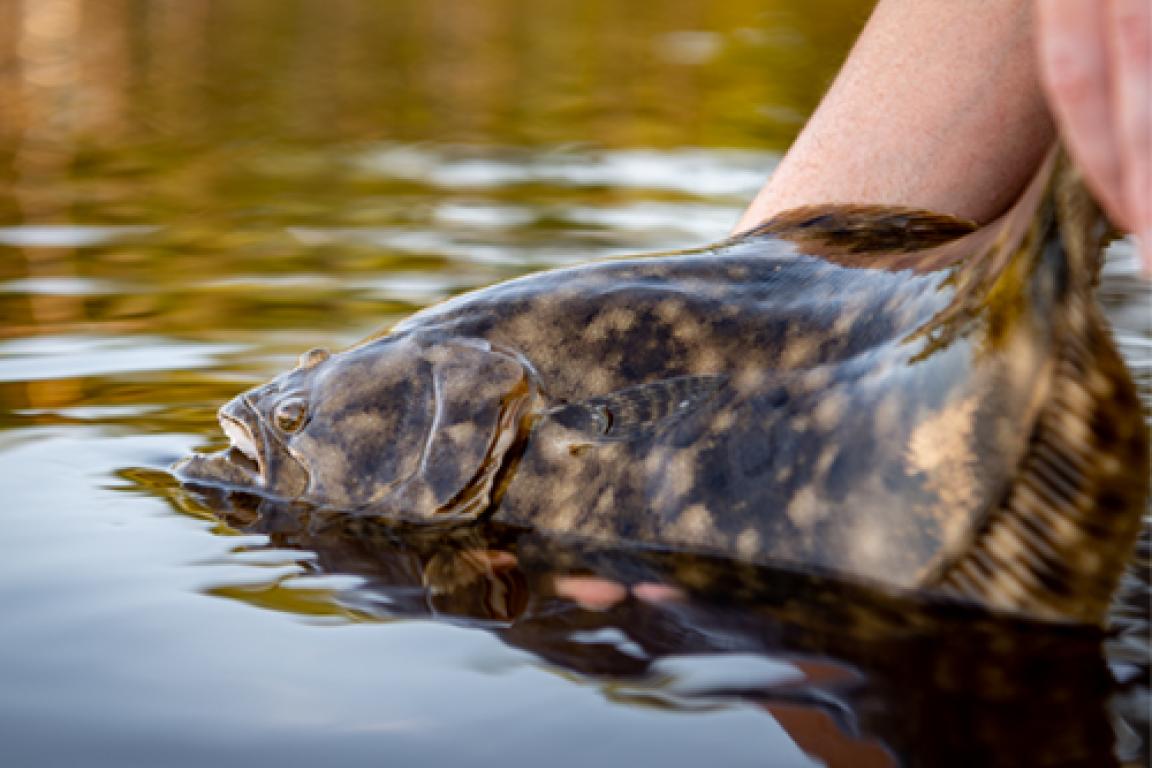
While not an endorsement of the Wildlife Resources Commission’s decision to open a recreational flounder season this year, the North Carolina Marine Fisheries Commission last week approved a measure opening a season in jointly managed waters that aligns with Wildlife Resources’ recreational flounder season.
Division of Marine Fisheries Director Kathy Rawls issued a proclamation Tuesday mirroring the Wildlife Resources Commission’s previously announced season taking place Sept. 1-2 and Sept. 7-8. The daily creel limit is one fish with a minimum size limit of 15 inches.
Supporter Spotlight
The proclamation only applies to flounder caught by hook-and-line in joint waters and does not open coastal fishing waters to flounder harvest. An interactive map of coastal, joint and inland fishing waters is available online.
“The motion and proclamation make it clear that neither the MFC nor the DMF endorses the flounder limits established by WRC or the method by which the limits were derived. Rather, the MFC and DMF recognize that conflicting regulations in these waters creates confusion for anglers and an enforcement gap that will impede Marine Patrol efforts in Joint Fishing Waters,” Marine Fisheries officials said.
Marine Fisheries announced in May that it would not open a recreational flounder season in 2024 because 2023 estimates “indicate the recreational catch exceeded the quota allowed under a stock rebuilding plan that was included in Amendment 3 to the Southern Flounder Fishery Management Plan and adopted by the N.C. Marine Fisheries Commission.”
Initially, the Wildlife Resources Commission was going to mirror the Marine Fisheries decision. But after public comment and discussion it instead opted during a July 25 meeting to approve a hook-and-line season for recreational flounder in inland and joint waters.
Related: No recreational flounder season likely this year; here’s why
Supporter Spotlight
The back and forth between the two agencies began several years ago over jurisdiction disputes. As it stands, Marine Fisheries manages coastal waters, Wildlife Resources manages inland waters and both manage joint waters.
The Marine Fisheries Commission also tasked the Division of Marine Fisheries director to ask the North Carolina Department of Environmental Quality secretary for permission to move up the schedule to begin this year to review the Southern Flounder Fishery Management Plan.
The Marine Fisheries Commission also voted to send the draft Spotted Seatrout Fishery Management Plan Amendment 1 to the public and advisory committee for review.
The 2022 Spotted Seatrout Stock Assessment found that the stock is not overfished, but overfishing is occurring. This means the population is currently large enough to sustain itself, but fishing is removing fish from the population at an unsustainable rate.
The Marine Fisheries Commission approved notice of text to begin the rulemaking process to amend or adopt rules to simplify pot-marking requirements, for false albacore management, and for the Interstate Wildlife Violator Compact. A public comment period will be held this fall.
The commission suspended rules for an indefinite period that allow the continued striped mullet recreational possession limits and the continued year-round trawl closure in crab spawning sanctuaries.
The commission set at 500 the annual cap for the number of standard commercial fishing licenses available through the eligibility pool for fiscal year 2024-25.







